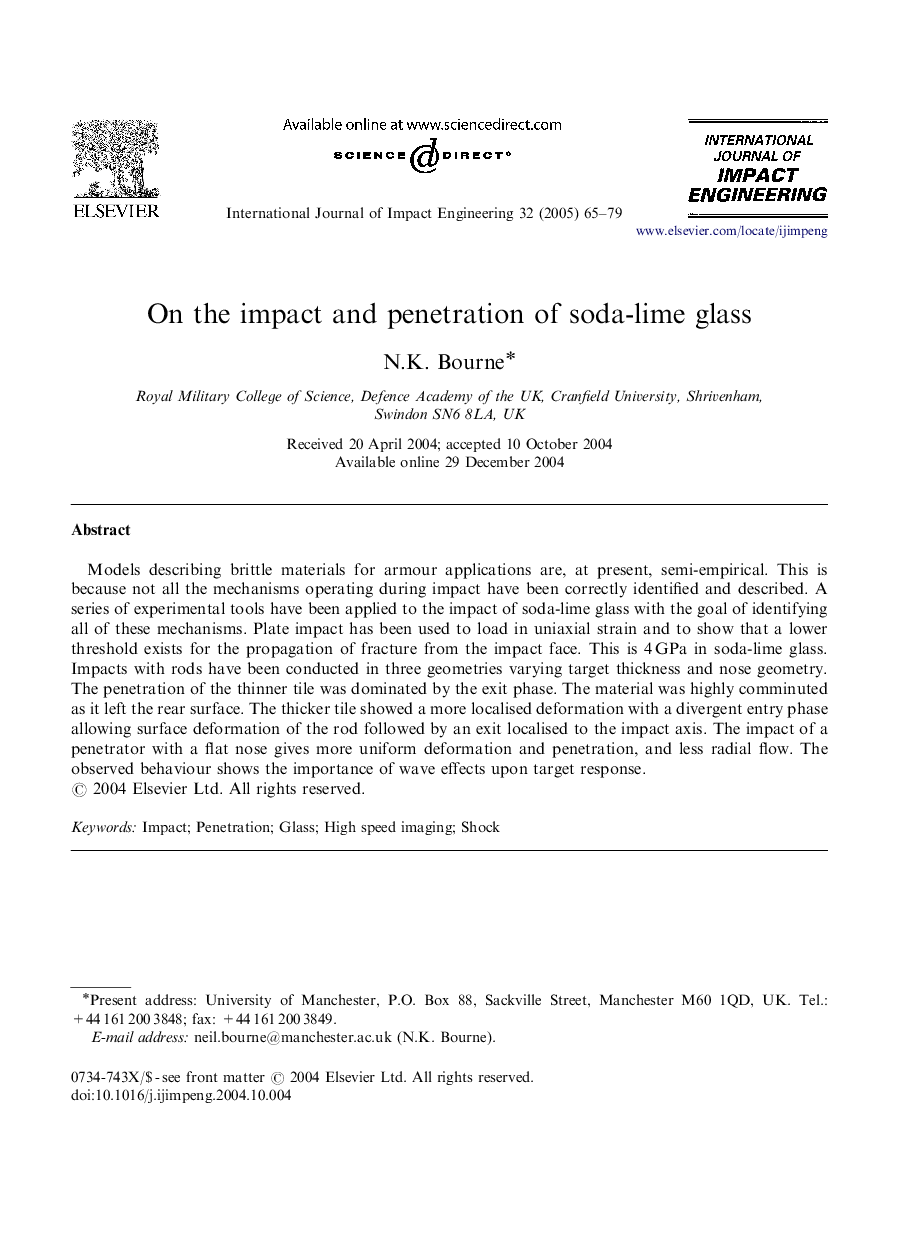| Article ID | Journal | Published Year | Pages | File Type |
|---|---|---|---|---|
| 9704642 | International Journal of Impact Engineering | 2005 | 15 Pages |
Abstract
Models describing brittle materials for armour applications are, at present, semi-empirical. This is because not all the mechanisms operating during impact have been correctly identified and described. A series of experimental tools have been applied to the impact of soda-lime glass with the goal of identifying all of these mechanisms. Plate impact has been used to load in uniaxial strain and to show that a lower threshold exists for the propagation of fracture from the impact face. This is 4Â GPa in soda-lime glass. Impacts with rods have been conducted in three geometries varying target thickness and nose geometry. The penetration of the thinner tile was dominated by the exit phase. The material was highly comminuted as it left the rear surface. The thicker tile showed a more localised deformation with a divergent entry phase allowing surface deformation of the rod followed by an exit localised to the impact axis. The impact of a penetrator with a flat nose gives more uniform deformation and penetration, and less radial flow. The observed behaviour shows the importance of wave effects upon target response.
Related Topics
Physical Sciences and Engineering
Engineering
Mechanical Engineering
Authors
N.K. Bourne,
